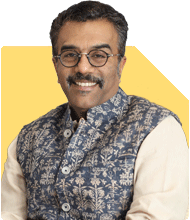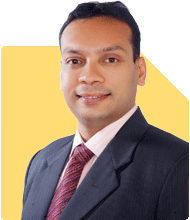Ramalingam Kalirajan |2424 Answers |Ask -Follow
Mutual Funds, Financial Planning Expert - Answered on May 01, 2024
He has an MBA in finance from the University of Madras and is a certified financial planner.
He is the director and chief financial planner at Holistic Investment, a Chennai-based firm that offers financial planning and wealth management advice.... more

Hello, Hope you're doing good! I am 32 yrs old and planning to invest till 60 yrs i.e till next 28 yrs. I am investing in below MFs and some other savings schemes, I need you suggestion on the same: MFs Investment: 1. ICICI Prudential Nifty Alpha Low Volatility 30 ETF FOF - 1,500/- PM 2. Tata Resource & Energy Fund - 2,000/- PM 3. ICICI Prudential Technology - 1,500/- 4. Nippon India Nifty Smallcap 250 Index Fund - 1,000/- PM 5. SBI Nifty Next 50 Index Fund - 1,000/- PM 6. ICICI Prudential Nasdaq 100 Index Fund - 1,000/- PM 7. ICICI Prudential Nifty Bank Index Fund - 2,000/- PM Apart from this I am also investing in NPS around 17,500/- PM and PF around 30,500 including both. Also investing 5,000/- in Max Life Online Savings Plan (10 yrs investing period and 15 Yrs total Policy period). My goal is to be accumulate wealth for my retirement. Thank you in advance for your help.
Maintaining a disciplined investment habit and staying committed to your financial goals over the next 28 years will be crucial. Regularly reviewing your portfolio's performance and adjusting it as needed to stay aligned with your objectives is essential.
Remember, the journey to retirement wealth accumulation is a marathon, not a sprint. Stay patient, stay focused, and trust in the power of compounding to grow your investments steadily over time.
By diligently contributing to your investment portfolio and making informed decisions, you're laying a solid foundation for a financially secure and fulfilling retirement. Keep up the good work, and your future self will thank you for it.
You may like to see similar questions and answers below
Ramalingam Kalirajan |2424 Answers |Ask -Follow
Mutual Funds, Financial Planning Expert - Answered on Apr 08, 2024
Ramalingam Kalirajan |2424 Answers |Ask -Follow
Mutual Funds, Financial Planning Expert - Answered on May 15, 2024
Ramalingam Kalirajan |2424 Answers |Ask -Follow
Mutual Funds, Financial Planning Expert - Answered on May 14, 2024
Ramalingam Kalirajan |2424 Answers |Ask -Follow
Mutual Funds, Financial Planning Expert - Answered on May 02, 2024
Chocko Valliappa |227 Answers |Ask -Follow
Tech Entrepreneur, Educationist - Answered on May 17, 2024
Ramalingam Kalirajan |2424 Answers |Ask -Follow
Mutual Funds, Financial Planning Expert - Answered on May 17, 2024
Ramalingam Kalirajan |2424 Answers |Ask -Follow
Mutual Funds, Financial Planning Expert - Answered on May 17, 2024
Ramalingam Kalirajan |2424 Answers |Ask -Follow
Mutual Funds, Financial Planning Expert - Answered on May 17, 2024
Ramalingam Kalirajan |2424 Answers |Ask -Follow
Mutual Funds, Financial Planning Expert - Answered on May 17, 2024
Ramalingam Kalirajan |2424 Answers |Ask -Follow
Mutual Funds, Financial Planning Expert - Answered on May 17, 2024
Chocko Valliappa |227 Answers |Ask -Follow
Tech Entrepreneur, Educationist - Answered on May 17, 2024
Krishna Kumar |281 Answers |Ask -Follow
Workplace Expert - Answered on May 17, 2024
Ramalingam Kalirajan |2424 Answers |Ask -Follow
Mutual Funds, Financial Planning Expert - Answered on May 17, 2024
Ramalingam Kalirajan |2424 Answers |Ask -Follow
Mutual Funds, Financial Planning Expert - Answered on May 17, 2024






















